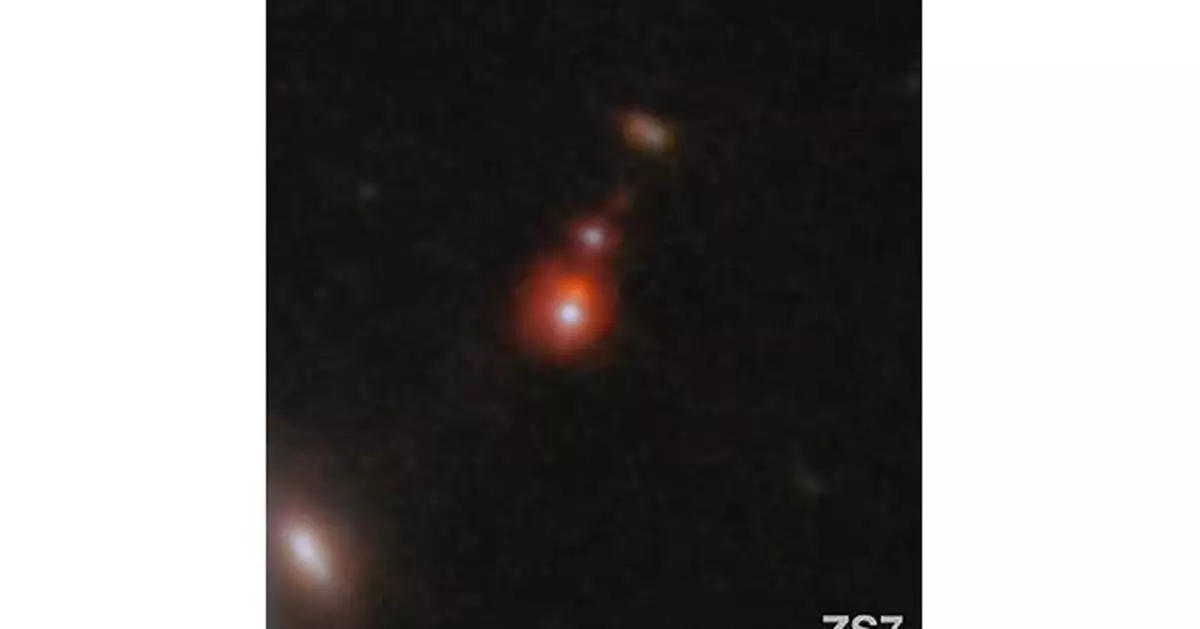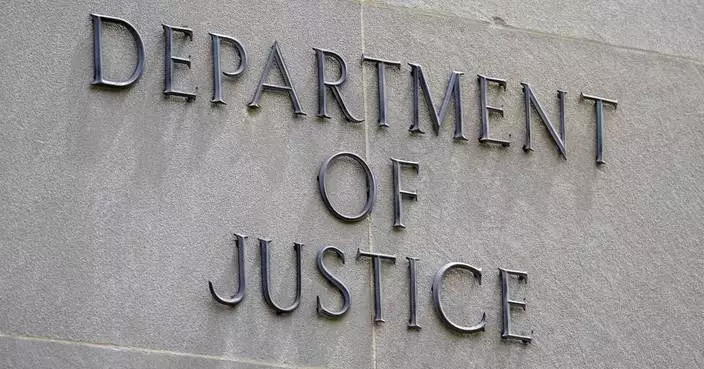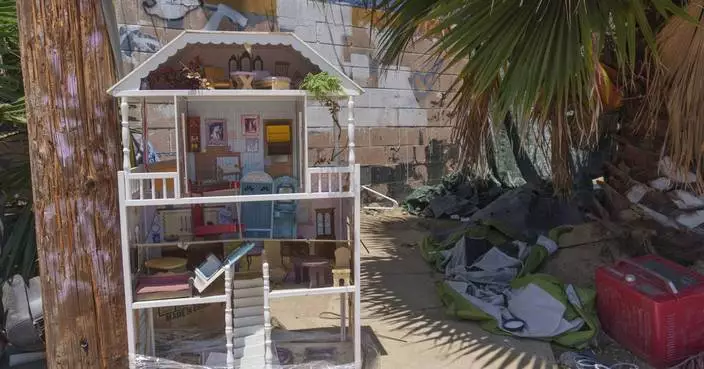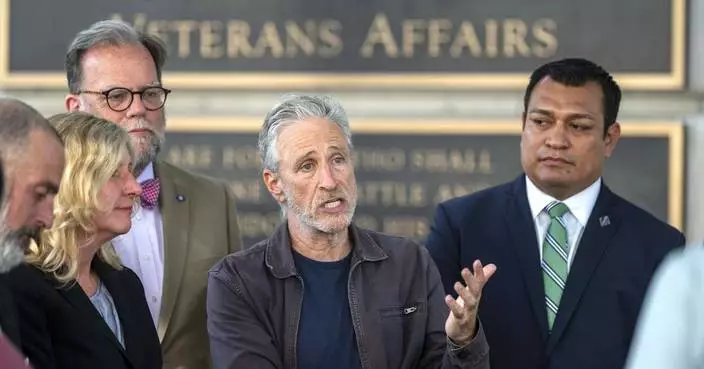CAPE CANAVERAL, Fla. (AP) — The Webb Space Telescope has discovered the earliest known merger of black holes.
These two gigantic black holes and their galaxies consolidated just 740 million years after the universe-forming Big Bang. It's the most distant detection ever made of merging black holes, scientists reported Thursday.
One black hole is 50 million times more massive than our sun. The other is thought to be similar in size, but is buried in dense gas, which makes it harder to measure.
Until now, astronomers weren’t sure how supermassive black holes got so big.
The latest findings, published in the Monthly Notices of the Royal Astronomical Society, suggest mergers are how black holes can grow so rapidly — “even at cosmic dawn,” said lead author Hannah Ubler of the University of Cambridge.
"Massive black holes have been shaping the evolution of galaxies from the very beginning," Ubler said in a statement.
Launched in 2021 as the eventual successor to NASA's Hubble Space Telescope, Webb is the biggest and most powerful observatory ever sent into space. A joint U.S.-European project, the infrared observatory surveys the universe from a location 1 million miles (1.6 million kilometers) from Earth.
The Associated Press Health and Science Department receives support from the Howard Hughes Medical Institute’s Science and Educational Media Group. The AP is solely responsible for all content.

This image released by NASA shows the ZS7 galaxy system, revealing the ionized hydrogen emission in orange and the doubly ionized oxygen emission in dark red. (ESA/Webb, NASA via AP)
PHOENIX (AP) — A judge on Friday rejected an effort by GOP lawmakers to use the term “unborn human being” to refer to a fetus in the pamphlet that Arizona voters will use to weigh a ballot measure that would expand abortion access in the state.
Maricopa County Superior Court Judge Christopher Whitten said the wording the legislative council suggested is “packed with emotion and partisan meaning” and asked for what he called more “neutral” language. The measure aims to expand abortion access from 15 weeks to 24 weeks – the point at which a fetus can survive outside the womb.
It would allow exemptions to save the woman’s life or to protect her physical or mental health. It would also prevent the state from adopting or enforcing laws that would forbid access to the procedure.
Arizona House Speaker Ben Toma, who is a co-chair of the legislative council, said the group will appeal the court’s decision to the state Supreme Court.
“The ruling is just plain wrong and clearly partisan,” said Toma, a Republican.
The State Supreme Court has until Aug. 27 to rule on the appeal for the language to be changed.
Aaron Thacker, communications director for Arizona Secretary of State Adrian Fontes, noted that the final decision on the ballot itself remains in the air.
“There’s still a lot of scenarios at play," he said. "Even after the secretary certifies the signatures, the courts have to decide if counties can put it on the ballot or not."
Arizona for Abortion Access, the organization leading the ballot measure campaign, sued the council earlier this month over the suggested language and advocated for the term “fetus,” which the council rejected.
Attorney General Kris Mayes wrote in a motion to submit an amicus brief that “fetus" and “pregnancy” are both neutral terms that the council could adopt.
“It’s incredibly important to us that Arizona voters get to learn more about and weigh our measure in objective and accurate terminology,” said Dawn Penich, communications director for the abortion access group.
Democrats have centered abortion rights in their campaigns in this year’s elections. Organizers in five other states have also proposed similar measures that would codify abortion access in their state constitutions: Colorado, Florida, Maryland, Nevada and South Dakota.
Arizona organizers submitted more than double the amount of signatures needed for the measure to appear on the ballot.

FILE - Arizona abortion-rights supporters deliver over 800,000 petition signatures to the capitol to get abortion rights on the November general election ballot July 3, 2024, in Phoenix. A judge on Friday, July 26, rejected an effort by GOP lawmakers to use the term “unborn human being” to refer to a fetus in the pamphlet that Arizona voters will use to decide on a ballot measure that would expand abortion access in the state. (AP Photo/Ross D. Franklin, File)











